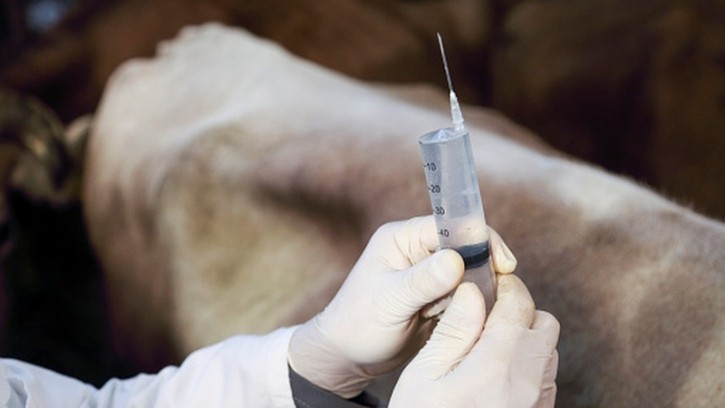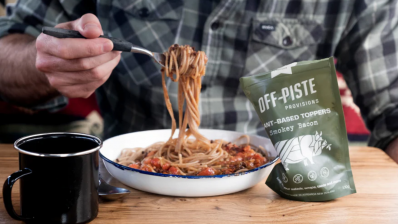Antibiotic misuse in Asian food animal production poses grave public health threat: Indian study

The World Health Organisation (WHO) has identified antimicrobial resistance (AMR) as a significant global threat, causing substantial economic losses and an estimated annual loss of 700,000 lives.
In Southeast Asia, for instance, where 73% of antibiotics are consumed in the animal health and production sectors, food animal production transitioning to more intensive systems has led to increased reliance on antimicrobials. This has, in turn, contributed to the emergence and dissemination of AMR in the region.
In a comprehensive study spanning the period of 2011 to 2020, researchers at the Veterinary and Animal Sciences University in Punjab noted the alarming rise of antibiotic resistance and its potential transmission to humans through the food chain. They also shed light on the pervasive use of critically important antibiotics in food animal production across Asia, as well as how limited surveillance and regulatory controls had amplified concerns over antibiotic resistance.
Animal and human health implications
The study encompassed 11 WHO member countries — Bangladesh, Bhutan, India, Indonesia, the Maldives, Myanmar, Nepal, North Korea, Sri Lanka, Thailand and Timor-Leste. It delved into scientific literature from diverse sources, including the NCBI database, PubMed, Google Scholar and Science Direct, as well as reports from organisations such as the WHO, World Organisation for Animal Health, the United Nations’ Food and Agriculture Organisation, and the World Bank.
Results from the review of 108 selected publications revealed a staggering 1,126 scientific publications on antibiotic use in food animals, wherein the study identified a concerning trend of antibiotic misuse in livestock, poultry and aquaculture.
The study categorised antibiotics as Critically Important Antibiotics (CIA), Highly Important Antibiotics (HIA) and Important Antibiotics (IA) and revealed their widespread use in livestock, poultry and aquacultured fish. Such practices raise critical food safety concerns, as the development of resistant microflora in animal-derived products poses a direct risk to human health.
Antibiotic misuse in food animals was vividly illustrated by the prevalence of prophylactic use in layer production in Bangladesh (accounting for 85%) and its equally alarming use for therapeutic and growth promotion purposes in broiler production. The most frequently used antibiotics included polymyxins, sulphonamides, tetracycline, quinolone and penicillin, with colistin emerging as a common choice.
The 32 reviewed studies on India reported the extensive use of antibiotics like ciprofloxacin, nalidixic acid and tetracycline in poultry, with 67% of farms employing antibiotics as growth promoters. Similar trends were observed in Indonesia, Myanmar and Nepal, raising serious concerns about the potential for antibiotic resistance.
The study highlighted the widespread misuse of antibiotics in the absence of expert monitoring, with 60% of farmers admitting to using antibiotics without prescription. The easy availability and low cost of antimicrobials were identified as major contributors to this misuse, jeopardising public health.
On the other hand, the study also shed light on antibiotic resistance in food animal production. Livestock in countries like Bangladesh, India, Indonesia, Nepal, Sri Lanka and Thailand exhibited resistance to various antibiotic classes, including penicillin, tetracycline, quinolones, macrolides and aminoglycosides.
The implications of antibiotic resistance in food animals are dire, with multi-drug resistant organisms identified in livestock and their products. In India, southern and north-eastern regions were identified as "regional multi-drug resistance hotspots", linked to the unregulated use of antibiotics.
In poultry production, antibiotic resistance was rampant, with Salmonella, E. coli and Campylobacter spp. showing resistance to multiple antibiotic classes. The study highlighted the need for urgent measures to curb the misuse of antibiotics in food animal production to avert a looming public health crisis in Asia.
Research and regulations
The existing challenges in addressing this issue are manifold, including a lack of consensus on indicators, diverse sampling designs and under-developed infrastructure for monitoring and controlling antibiotic production. Regulations and enforcement structures for antimicrobial use are also lacking, leading to the widespread availability of critically important antibiotics without prescription.
To curb the growing threat of antibiotic resistance, the study emphasised the need for Asian countries to strengthen surveillance and regulatory controls through a comprehensive "One Health" approach. Judicious animal health services play a crucial role in mitigating AMR by promoting responsible antibiotic use and raising awareness among farmers regarding the risks associated with misuse.
The researchers concluded by underscoring the urgent need for proactive measures in combating antibiotic resistance in food animal production in Asia. The establishment of robust regulatory frameworks, strengthening veterinary services, promoting antibiotic alternatives and fostering international collaborations within the "One Health" context are crucial steps in addressing this pressing global health challenge.
They wrote: “This approach, which recognises the interconnectedness of human, animal and environmental health, offers a promising avenue to mitigate the alarming rise of antibiotic resistance in the region and protect the well-being of both animals and humans alike.”
Source: Journal of Infection and Public Health
“Review of antibiotic use and resistance in food animal production in WHO South-East Asia Region”
https://doi.org/10.1016/j.jiph.2023.11.002
Authors: Hina Malik, et al.

















